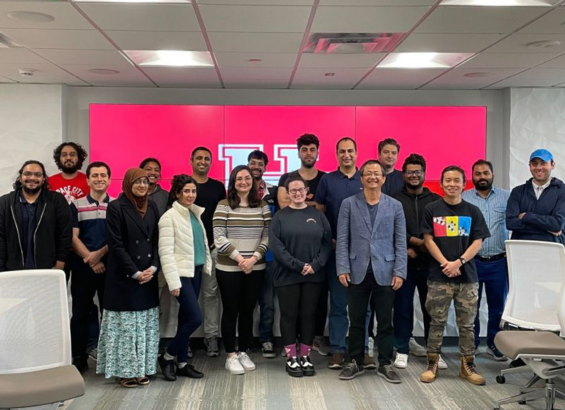
Smoke particulates from wildfires could lead to 4,000 to 9,000 premature deaths and cost $36 to $82 billion per year in the United States, according to new research by the University of Houston, Cornell University and Nanjing University of Information Science and Technology (NUIST) in China.
The study, “Quantifying the Premature Mortality and Economic Loss From Wildfire-Induced PM2.5 in the Contiguous U.S.,” was published in the journal Science of the Total Environment.
“Our study highlights the devastating effects wildfires can have on human health and the economies of communities hundreds of miles away from wildfires, as evidenced by the central Canadian wildfires in June that impacted eastern U.S. cities like New York City, Washington D.C. and Philadelphia,” said Yunsoo Choi, associate professor of atmospheric chemistry in UH’s College of Natural Sciences and Mathematics.
Choi is the study’s corresponding author; his research group at UH ran all the scenario modeling simulations. The study’s first author is Shuai Pan, a former Cornell postdoctoral researcher, now in the Emergency Management College at NUIST.
“We think of automobile tailpipes and factory emissions polluting our air,” said Oliver Gao, Cornell’s Howard Simpson Professor in the Department of Civil and Environmental Engineering, an author on the study. “We don’t necessarily think about air pollution from natural sources like wildfires.”
Wildfires release fine particulate matter – called PM2.5, which are tiny particles in the air that consist of inhalable organic compounds, aerosols and metals that are 2.5 microns or less. For comparison, a human hair is about 50 to 70 microns in diameter and a particle of beach sand is about 90 microns in diameter. PM2.5 can enter the lungs and bloodstream.
“Epidemiological studies suggested that exposure to wildfire-related PM2.5 was positively associated with mortality and some common respiratory diseases,” Pan said.
The researchers used satellite wildfire emission and air quality (PM2.5) data gathered from 2012 to 2014 for their current updated model and assessed how smoke from wildfires could impact human health and economies.

Metropolitan regions located near fire sources, such as Los Angeles, Houston and Atlanta, will likely see a large health burden and corresponding economic loss, according to the study.
Los Angeles – downwind from fires in the western U.S. – may see 119 premature deaths annually, and $1.07 billion in financial burden, according to the new model the study’s authors created. Downwind from southern U.S. fires, Atlanta could have 76 premature deaths annually with $690 million in economic fallout, while Houston, estimated to have 65 premature deaths attributable to fire-induced particulate matter, may see $580 million in economic fallout.
In the model, the researchers estimated the New York City metropolitan area would incur 86 premature deaths resulting from similar events and see $780 million in associated economic costs.
California, Florida, Texas, Georgia, Alabama and North Carolina likely would be the states with the highest number of premature deaths due to the volume of particulate matter distributed by the smoke.
Law and regulations – such as planned events to thin forests – could reduce and mitigate the harmful effects of wildfires, Gao said.
“In this era of climate change, if we remove flammable vegetation and do things like create green fire breaks and reduce the fuel for the fires, we can substantially decrease the harm of smoke downwind in populated areas,” Gao said.
Other institutions participating in the study were the Pacific Northwest National Laboratory; Pusan National University in Korea; Ambri, Inc.; and the Harvard-Smithsonian Center for Astrophysics.
The Center for Transportation, Environment, and Community Health, part of the U.S. Department of Transportation, funded this research.
- Blaine Friedlander of Cornell University contributed to this release